di Santo Scalia

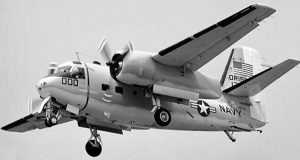 Un aereo della Marina degli Stati Uniti d’America, modello Grumman C-1A Trader, con 6 uomini a bordo, decolla nel pomeriggio del 17 gennaio 1972 dall’aeroporto di Napoli diretto alla base aerea di Sigonella, in Sicilia. Non vi arriverà mai.
Un aereo della Marina degli Stati Uniti d’America, modello Grumman C-1A Trader, con 6 uomini a bordo, decolla nel pomeriggio del 17 gennaio 1972 dall’aeroporto di Napoli diretto alla base aerea di Sigonella, in Sicilia. Non vi arriverà mai.
Presso la base aerea di Sigonella si trova la Naval Air Station (NAS Sigonella) dell’Aviazione della Marina statunitense, utilizzata anche per operazioni della NATO. Dopo l’ultimo contatto radio delle 15:10, dell’aereo (registrato con la sigla 037), e dei suoi occupanti, non si hanno più notizie.
A bordo si trovano 6 militari statunitensi: il primo pilota James W. Brewster (26 anni), il secondo Harold F. Flaten (23 anni), il sottotenente John M. Sullivan (23 anni), i meccanici George E. Reeves (34 anni) e Robert F. De Marest (40 anni) e l’ elettricista Barrel L. Rickey (20 anni).
Sulla loro rotta si trova la mole dell’Etna – all’epoca raggiungeva i 3323 metri (più o meno l’attuale altezza) – e sul vulcano imperversa un fortissimo temporale.
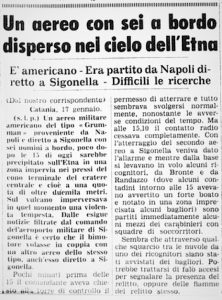
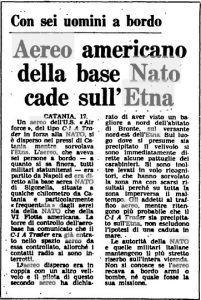
Il giorno dopo, il 18 gennaio, le principali testate giornalistiche nazionali riportarono la notizia della scomparsa del Grumman.
Appena le condizioni meteorologiche migliorarono, cominciarono le ricerche; il relitto fu cercato in mare, con l’ausilio del cacciatorpediniere Holder della Sesta Flotta americana e della corvetta italiana Aldebaran. Fu cercato dal cielo, utilizzando un bimotore antisommergibili S-2F dell’Aeronautica Italiana, un elicottero della Marina Militare Italiana (AH-3D) ed uno della Usaf (SH-RD). Anche la portaerei americana Kennedy si diresse verso le zone di mare interessate.
Ma anche da terra, nonostante le difficilissime condizioni a 3000 metri, si cercò di trovare qualche traccia del velivolo: reparti di polizia, carabinieri e militari della divisione Aosta, approfittando di qualche schiarita, e attrezzati di sci, provarono a percorrere i costoni del vulcano, ma senza esito.

A fine marzo furono ritrovati alcuni rottami del velivolo, ma dei militari non si trovò alcuna traccia !
A pensar male, a volte, si fa presto: così cominciarono a girare voci, non confermate, sullo scopo del volo. Si disse che a bordo venisse trasportato il denaro che sarebbe servito a pagare gli stipendi dei dipendenti della base siciliana, che forse… non si fosse trattato di un incidente, ma che i sei militari avessero pianificato l’abbandono del velivolo utilizzando i paracadute e che si fossero poi dileguati con la cassa. L’aereo, nei loro piani, si sarebbe inabissato in nel Mar Tirreno o si sarebbe schiantato contro l’Etna, dove, in mille pezzi, sarebbe poi stato ricoperto dalla neve.
La domenica 23 aprile il mio amico, e compagno di tante avventure sull’Etna, Giuseppe Scarpinati, nel corso di una escursione nelle zone sommitali etnee, trovò nella sella fra il Cratere Centrale ed il Nord Est, intorno ai 3200 metri, una giacca militare rossa con dentro un’etichetta che riportava la scritta “Carmel by the sea“. Ad una rapida ricerca Carmel risultò essere una piccola e graziosa città californiana, posta sulle scogliere della penisola di Monterey.
Recatosi immediatamente a Sigonella e informate le autorità, questa scoperta indirizzò le ricerche in quell’area ma l’equipaggio non fu trovato. Nella fotogallery, grazie alla cortesia di Pippo Scarpinati, le straordinarie immagini dei rottami.
Fu solo ad ottobre, il 17, che i resti delle salme furono rinvenuti.
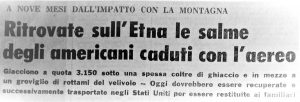
Il quotidiano catanese La Sicilia, nell’edizione del 18 ottobre qui riportata, descrive così il ritrovamento: «A nove mesi esatti dalla sciagura, ieri sono stati ritrovati i corpi dei sei militari americani che si trovavano a bordo dell’aereo schiantatosi contro l’Etna […] Ieri mattina poi, la guida Antonio Nicoloso, a quota circa 3150, a meno di cento metri dal punto in cui erano stati localizzati i primi rottami dell’aereo, ha scoperto, quasi per intero interrata e seppellita da uno spesso strato di neve ghiacciata, un’altra porzione del velivolo. I febbrili scavi hanno portato alla sorprendente scoperta della parte anteriore del bimotore e, fra un rottame e l’altro, corpi umani – quelli dei militari americani – aggrovigliati e confusi. L’opera di recupero verrà completata entro oggi».
Nessun piano diabolico, quindi, ma solo una disgrazia. In seguito, altre voci, peraltro anch’esse non confermate, pur non fornendo chiarimenti sulla missione del volo, smentirono che fosse in corso il trasferimento del denaro per le casse della base.
Con il titolo: la foto dell’aereo caduto sull’Etna, eccezionale documento di Giuseppe Scarpinati
___________________
By Santo Scalia
A U.S. Navy aircraft, model Grumman C-1a Trader, with 6 men on board, takes off on the afternoon of January 17, 1972 from Naples Airport headed to the Sigonella air base in Sicily. He’il never get there.
At Sigonella Air Force Base there is the Naval Air Station (Sigonella NAS) of the U.S. Navy, also used for NATO operations. After the last radio contact of the 15:10, the plane (registered with the abbreviation 037), and its occupants, there is no more news. On board there are 6 U.S. military: the first driver James W. Brewster (26 years), the second Harold F. Flaten (23 years), the Lieutenant John M. Sullivan (23 years), the Mechanics George E. Reeves (34 years) and Robert F. De marest (40 years) and the electrician Barrel L. Rickey ( 20 years).
On their route is the mole dell’etna-at the time reached the 3323 meters (more or less the current height)-and on the volcano raging a strong storm.
The next day, on January 18, the main national newspapers reported the disappearance of Grumman. As soon as the weather conditions improved, the researches began; the wreck was searched at sea, with the help of the destroyer Holder of the sixth American fleet and the Italian Corvette Aldebaran. It was searched from the sky, using an anti-submarine S-2f twin engine from the Italian Air Force, a helicopter of the Italian navy (AH-3d) and one of the Usaf (SH-RD). The American aircraft carrier Kennedy also headed for the affected sea areas.
But even from the ground, despite the difficult conditions at 3000 meters, we tried to find some traces of the aircraft: police, Carabinieri and military departments of the Aosta Division, taking advantage of some clearing, and equipped with skis, tried to travel the ribs of the volcano, but without outcome. At the end of March some wreckage of the aircraft were found, but there was no trace of the military!
To think bad, sometimes, it becomes early: so they began to turn rumors, not confirmed, on the purpose of the flight. It was said that on board was transported the money that would serve to pay the salaries of employees of the Sicilian base, which perhaps … it was not an accident, but that the six soldiers had planned to abandon the aircraft using the parachute And then they disappeared with the crate. The plane, in their plans, would have sunk in the Tyrrhenian Sea or would have crashed into the Etna, where, in a thousand pieces, it would have been covered by snow.
On Sunday, April 23, my friend, and companion of many adventures on Mount Etna, Giuseppe Scarpinati, during an excursion to the summit areas Etnee, found in the saddle between the central crater and the northeast, around 3200 meters, a red military jacket With inside a label that reported the inscription “Carmel by the Sea “. A quick search Carmel turned out to be a small, pretty Californian town on the cliffs of the Monterey Peninsula.
Immediately to Sigonella and informed the authorities, this discovery directed the research in that area but the crew was not found. In the pictures of the photogallery we can admire, thanks to the courtesy of Pippo Scarpinati, the extraordinary photos of the wreckage.
It was only in October, on the 17th, that the remains of the bodies were unearthed.
The newspaper of Catania La Sicilia in the edition of October 18 here reported, describes the finding: “At nine months of the disaster, yesterday were found the bodies of the six American military who were aboard the plane crashed against Etna […] Yesterday morning Then, the guide Antonio Nicoloso, at an altitude of about 3150, less than a hundred meters from the point where the first wreckage of the plane had been located, discovered, almost entirely underground and buried by a thick layer of icy snow, another portion of Aircraft. The febrile excavations led to the surprising discovery of the front of the twin-engine and, between one scrap and the other, human bodies – those of the American military – Tangled and confused. The work of recovery will be completed by today”.
No diabolical plan, therefore, but only a disgrace. Later, other rumors, also unconfirmed, although not providing clarification on the mission of the flight, denied that it was in progress the transfer of money to the coffers of the base.
With the title: the photo of the plane dropped on Mount Etna, an extraordinary document by Pippo Scarpinati


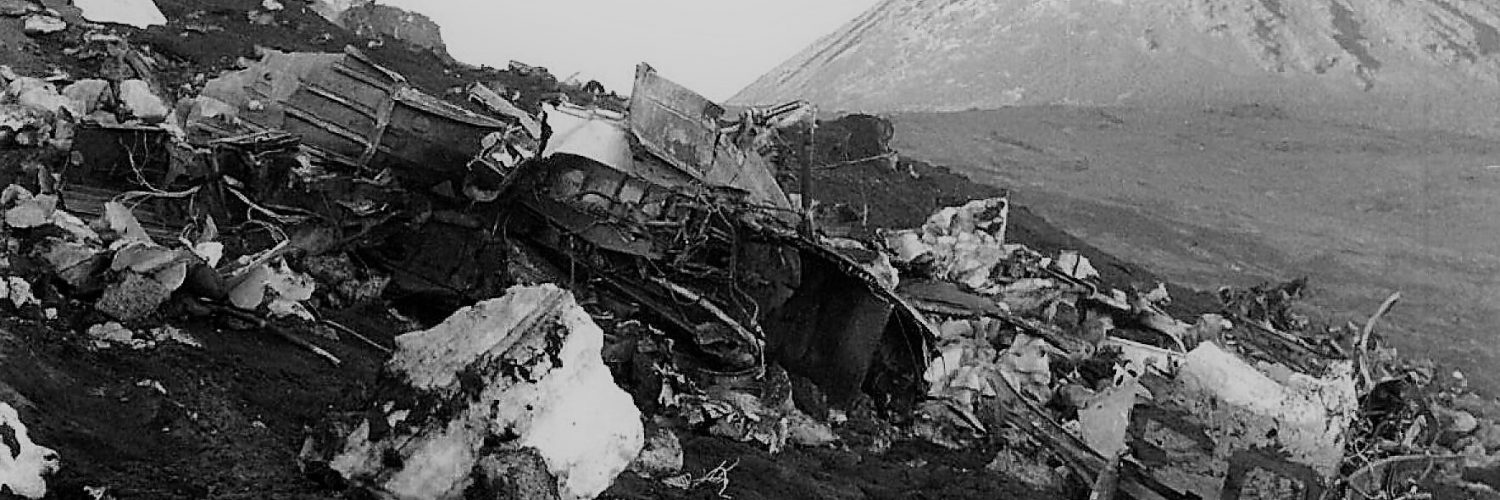
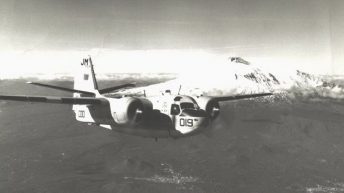

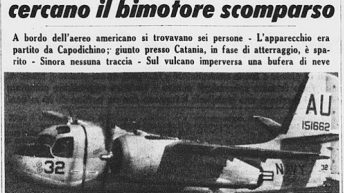
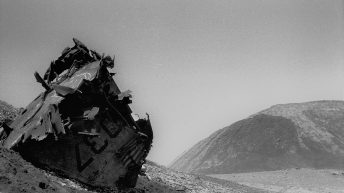
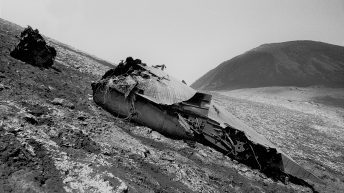
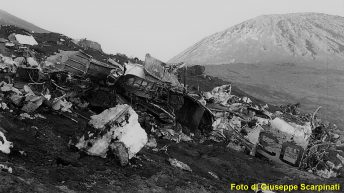

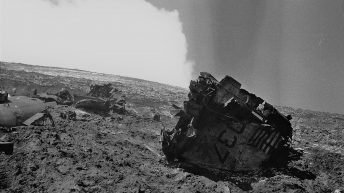
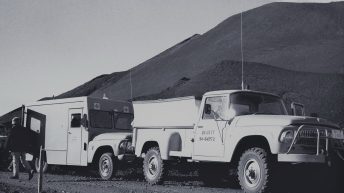

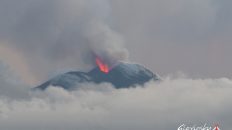
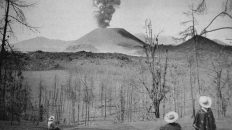
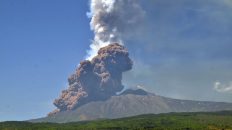

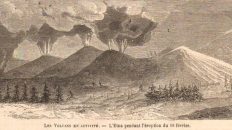
Commenti recenti